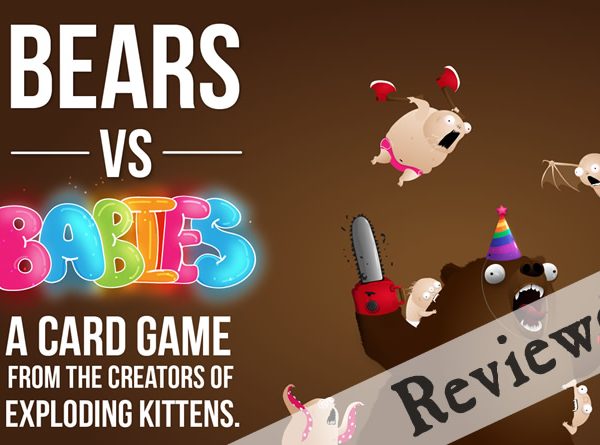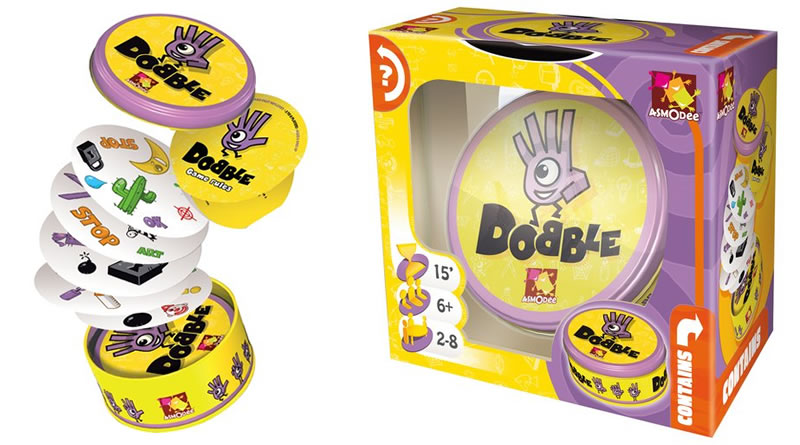A small red velvet drawstring bag, containing 16 cards and 13 very small red wooden cubes didn’t seem like it was going to keep my interest for very long, especially when I placed it next to my Warhammer 40K Dark Imperium box or Zombicide. At 10% of the price of those big box games I guess 10% of the enjoyment would be a fair return…maybe?
But as this Love Letter game review will reveal, a simple well thought out game can be quite captivating and executed neatly with just a few assets.
What’s in the box?
There isn’t really a box…it’s a plastic blister pack with, as outlined above, a small red velvet bag containing 16 cards and 13 very small red wooden cubes!
Basic Game Overview
It all begins with a very sad princess…awww 🙁
Rather creepily, you and a handful of other opportunistic people have decided that while the princess appears to be at her lowest emotional mood the time is right to try and woo her with carefully crafted love letters. Your aim is to get your love letter delivered to the princess first and if successful gain a very small red wooden cube as a token of her affection. If you get enough of these very small red wooden cubes then you win the game and, I presume, get to marry the sad princess or at least go on a date or something.
Getting your letter delivered first all depends on who is carrying the letter for you at the end of the game as the characters involved have different levels of influence over the princess. This influence level is scored from one to eight through the different cards. Among the sixteen cards in the pack there are five Guard cards (score of one), two Priests, two Barons, two Handmaids and two Princes (scores of two, three, four and five respectively) and then a single card each for the Countess (score of six), the King (seven) and then the Princess herself (eight)…presumably holding her card means you have somehow delivered the letter to her yourself?
Each type of card has its own action which is triggered when the card is discarded, and here is a basic run down of how the game is set up and then played.
The deck of sixteen cards is shuffled and one card is randomly removed (without looking at it) and placed face down on the table. Each player is dealt one card face down which they can pick up and read and the remaining cards are placed face down on the table in a deck. Play starts with the first player taking a card off the top of the deck and then choosing which one of the two cards they are now holding to discard. When a card is discarded then the action associated with the card must be carried out. For example, a Guard card when discarded allows the player to name a non-Guard card and then choose another player. If that player is carrying the named card then they are out of that round. The Priest card allows you to look at another player’s hand; the Baron has you and another player secretly comparing hands with the lowest scored player going out for that round.
Every time a card is discarded it is left in the middle of the table face up so that players can keep track of what cards have been removed and therefore have increasingly better guesses at what their remaining opponents are likely to be holding. The removal of a random card before the game begins though does make it pretty much impossible to know exactly which card your final opponent is left holding in the final turn…only a very recently played Priest card would give you that insight.
There are a few cards that can end up being discarded and lead to a player being eliminated from the round and you can win the round by being the last person ‘standing’ or when the last card is drawn and discarded you can win by having a higher score on your remaining card than whoever is left in the round with you.
That is pretty much it; the whole game quickly explained. It is no more complicated than that.
What’s it like to play?
It’s actually pretty good fun to play and I am always very surprised with how much I enjoy a short session of Love Letter when one of the kids opens the bag. It is touted as a game for two to four players and while being OK for two players it is way better with three of four and in my opinion best with four.
It is frustrating when you get eliminated early on in a round, but the rounds move swiftly and you are soon back in the game. Conversely, it is just the bomb when you eliminate someone else really early on, especially when it is during your first turn and you pop down a Guard card and by sheer luck knock an opponent out before they have a chance to do anything. Stings when it happens to you but oh so sweet when you are the perpetrator.
Love Letter zips along at a decent pace and this is helped by you only having two cards at most in your hand during your turn, one of which is quickly discarded. Eliminations seem to speed a round up, but this is partly driven by the random luck aspect of the game. There is some deduction involved in the game, but not a huge amount initially. If you make it down to being one of the last two in a round then you have a chance of working out a very short list of what your opponent is holding and that increases your chances of winning but ultimately it is a game of luck and chance.
And that is OK.
Not every game needs to be jammed up with clever mechanics and motions and ultra competitive. Love Letter is a card game in the truest sense in that you can be experienced and seemingly good at the game but if you keep getting bum deals or deck draws then you will lose. The cards you pick up are completely random, like any good card game…sometimes the cards are with you and other times they are against you.
Who would like it?
Anyone who is happy to just pass some time playing a nice game will like Love Letter. It is an addictive little so and so. It is completely age neutral also and perfectly safe for playing with kids, grandparents and anyone else in between. This is not a highly competitive game and there will never be tournaments for Love Letter. If you have friends who can’t stand the random nature of a game or who hate being eliminated for a few minutes then keep them away from Love Letter. Everyone else should wade in and give it a go…it is really, surprisingly, rather good.
One tip, if you have children at primary school and often need to buy a birthday present when they get invited to a party then this is a perfect gift, in the same way Dobble is also.
Summary
This game suffers from having a silly name that will no doubt put some people off from buying it or trying it. It was recommended to me and I am glad I got a set and will proudly play it with anyone. It is not a high concept strategy game, or a complicated deck builder, neither does it require anything to be glued together or painted.
It is a small red velvet drawstring bag, containing 16 cards and 13 very small red wooden cubes which happens to work together in harmony to create a really fun game of chance and luck with a hint of deduction and skill. It costs £8 and the fun return on that tiny investment is huge. Don’t knock it until you try it.
Our Verdict

Scores 9 out of 12 as a small but perfectly packaged fun filler game that is easy to carry around and kill time with.
Publisher: Alderac Entertainment Group
No. of Players: 2 to 4
Recommended Age: 10+
Time To Play: Around 20 minutes
Price: £7.99 on Amazon UK


